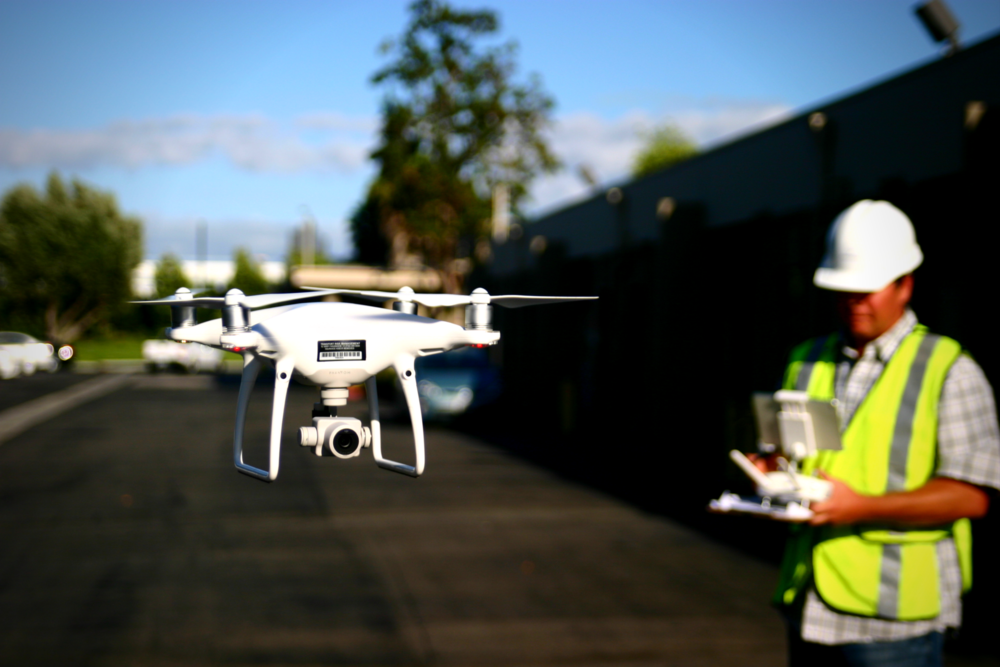Lately, the construction business has witnessed the remarkable transformation, mostly driven by improvements in technology. Drone Surveying Gloucestershire of the nearly all significant innovations reshaping this sector is definitely drone surveying. Drones provide an distinctive aerial perspective, allowing for more efficient files collection and examination, ultimately streamlining techniques which have traditionally recently been time-consuming and labor-intensive. As construction assignments grow in scale and even complexity, the want for accurate and timely surveying alternatives becomes increasingly critical.
The particular incorporation of drones into surveying methods not only enhances precision but likewise reduces costs and even improves overall project management. From umschlüsselung terrains to examining infrastructure, drone technology is proving to be an invaluable asset across numerous stages of construction. This post will explore the particular myriad ways inside of which drone surveying is revolutionizing the, highlighting its advantages, applications, and upcoming potential. Whether Drone Surveying Gloucestershire are new to typically the concept or seeking to deepen your understanding, this comprehensive review will guide a person through the requirements of drone surveying and its effects on construction.

Transformative Benefits of Drone Surveying
Drone surveying is changing the construction industry by offering unprecedented precision and efficiency. Classic surveying methods generally require extensive manpower and time, with surveyors navigating difficult terrains and working with complex gear. In contrast, drones equipped with innovative sensors and digital cameras can cover major areas in a new fraction of typically the time, capturing high resolution imagery and files that could take clubs days or months to collect. This functionality allows construction projects to start with sooner, lowering delays and boosting overall productivity.
Another considerable advantage is the particular safety improvements drones provide. Construction internet sites can be dangerous, and sending personnel into difficult-to-reach or perhaps potentially dangerous areas poses risks. Drones enable surveying of the locations without adding workers in harm’s way. This not only protects the workforce and also complies with safety rules, which can cause lower insurance expenses for construction organizations. Furthermore, the broad data collected by way of drone surveys can certainly facilitate better decision-making and project setting up, ultimately resulting in more secure construction practices.
Financial savings are however another transformative benefit of drone surveying. By streamlining typically the surveying process in addition to reducing the need to have for extensive floor personnel, companies can significantly lower work costs. Moreover, typically the accuracy provided by drones minimizes the risk of problems and the need for costly rework. Customers can expect to see a more rapidly return on purchase, as projects may be completed more proficiently and within budget. As the technology is constantly on the evolve, the particular economic advantages of adopting drone surveying will only reinforce, making it an essential tool regarding modern construction.
Key Applications and Case Studies
Drone surveying has quickly become an invaluable tool across various industries, particularly in construction. Single notable application is usually in site evaluation and planning, where drones can cause comprehensive topographic maps and 3D types of construction sites. This data helps engineers in addition to architects visualize the particular site conditions, permitting more informed decision-making. https://obedient-llama-lrm7gv.mystrikingly.com/blog/sky-high-precision-how-drone-surveying-is-modifying-construction of it was viewed in the structure with the Hudson Yards development in Fresh York, where drone surveys provided essential insights into intricate site conditions and logistical planning.
Another impactful application of drone technology is in monitoring construction development. Drones can record regular aerial footage, allowing project professionals to progress towards schedules and budgets. The increased presence given by drones may help identify potential issues early, minimizing gaps and costs. For instance, the construction involving the Berlin Brandenburg Airport utilized drones to oversee development and ensure complying with safety rules, drastically improving project management efficiency and even coordination among clubs.
Furthermore, drones are proving necessary for infrastructure examinations, a sector of which requires precision and even safety. Traditional inspection methods often create risks to workers and can be time-consuming. Drones allow inspectors to collect high-resolution imagery and even data from hard-to-reach areas without endangering personnel. One prosperous case involved a major bridge inspection in Texas, in which a drone conducted detailed inspections in a cheaper time required simply by traditional methods, leading to quicker repairs in addition to improved safety final results.
Future Trends in Drone Surveying
The future associated with drone surveying is usually poised for substantial advancements, driven by rapid technological innovations. With the integration involving artificial intelligence and even machine learning, drones will become progressively adept at autonomously inspecting data and generating actionable insights. This particular capability will improve decision-making processes inside of construction, allowing with regard to more informed project management and minimizing human error. Like these technologies still evolve, the productivity and effectiveness associated with drone surveys will improve dramatically.
Furthermore, the miniaturization of drone technologies and the development of improved detectors will expand the range of applications for surveying. These compact drones might be equipped with high resolution cameras, LiDAR, plus thermal imaging, allowing comprehensive surveying even in challenging surroundings. A broader assortment of sensors will certainly facilitate specialized surveys necessary for ecological monitoring, infrastructure inspections, and disaster response, building a more functional tool for experts across various industries.
Regulatory developments will even participate in a crucial part in shaping the continuing future of drone surveying. Because governments recognize some great benefits of drones in surveying, there will likely be refined restrictions that promote their particular safe and widespread use. This may promote a more favorable environment for drone surveying services, raising accessibility for companies coming from all sizes. As regulations evolve, the particular drone surveying field is expected to be able to become more integral to construction, ultimately transforming how tasks are planned and executed.
